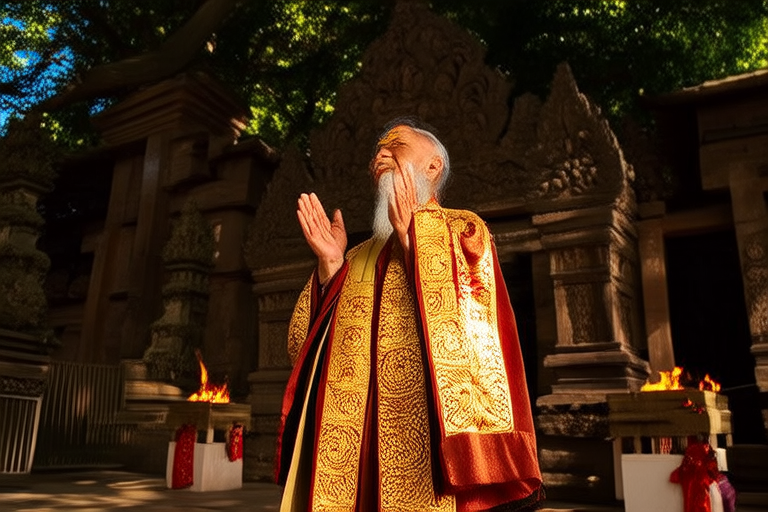Unveiling Sacred Rituals: Insights into World Cultures

“`html
Unveiling Sacred Rituals: Insights into World Cultures
Introduction
Sacred rituals are integral components of human culture, serving as conduits through which individuals and communities express their deepest spiritual beliefs and cultural identities. These rituals often encapsulate centuries of tradition, offering a window into the values, histories, and collective psyches of diverse societies. Understanding sacred rituals is essential for appreciating the richness and complexity of global cultural heritage.
This article aims to provide insights into several significant rituals from different parts of the world. By exploring the origins, historical contexts, and cultural significances of these rituals, we can gain a deeper appreciation for the varied ways in which humans connect with the divine and celebrate life.
Rituals of India – Diwali (Festival of Lights)
Diwali, also known as the Festival of Lights, is one of the most widely celebrated festivals in India. Originating from ancient Hindu mythology, Diwali commemorates the return of Lord Rama to his kingdom Ayodhya after defeating the demon king Ravana. The festival symbolizes the triumph of light over darkness, good over evil, and knowledge over ignorance.
The celebration involves the lighting of oil lamps, fireworks, and the decoration of homes with colorful rangoli designs. Families gather to share sweets, exchange gifts, and perform puja (worship) at home shrines. These practices not only create a festive atmosphere but also reinforce family bonds and community solidarity.
Diwali is more than just a celebration; it is a time for reflection, gratitude, and renewal. It encourages individuals to embrace positivity and look forward to brighter days ahead.
Rituals of Japan – Shinto Shrine Visits
Shintoism, Japan’s indigenous religion, plays a central role in shaping Japanese culture and identity. At the heart of Shinto practice are shrine visits, where devotees seek blessings, express gratitude, and pay respects to kami (spirits).
A typical visit begins with purification rites, involving washing hands and rinsing the mouth. Visitors then proceed to the main hall, where they bow twice, clap their hands twice, and bow once more before making an offering and praying. These actions symbolize humility and reverence towards the kami.
Shrine visits are deeply spiritual experiences, fostering a sense of connection between individuals and the natural world. They serve as reminders of the importance of harmony and balance in both personal and communal life.
Rituals of Mexico – Day of the Dead (Día de los Muertos)
The Day of the Dead, or Día de los Muertos, is a vibrant celebration that honors deceased loved ones. Rooted in pre-Columbian Mesoamerican traditions, this festival blends indigenous customs with Catholic influences brought by Spanish conquistadors.
Families construct elaborate altars adorned with marigolds, candles, photographs, and favorite foods of the departed. Offerings are left as gifts for returning spirits, ensuring their comfort during their brief visit. The festivities also include parades, face painting, and performances of traditional music and dance.
Día de los Muertos celebrates life rather than mourns death. It reinforces the belief that death is a natural part of the cycle of life and that the memory of loved ones continues to live on through shared memories and traditions.
Rituals of Africa – The Yoruba Orisha Festival
The Yoruba people, primarily found in Nigeria and Benin, have a rich religious tradition centered around the worship of orishas—deities believed to govern various aspects of nature and human experience. One of the most significant celebrations is the Orisha Festival, which honors these powerful entities.
The festival features vibrant music, energetic dances, and elaborate offerings made to the orishas. Participants wear colorful costumes representing different orishas and engage in rituals designed to invoke their blessings. These ceremonies promote spiritual cleansing, healing, and community bonding.
The Orisha Festival underscores the interconnectedness of the natural world and human existence. It provides a platform for individuals to seek guidance, strength, and unity within their communities.
Rituals of Indigenous Peoples – Sweat Lodge Ceremonies
Sweat lodge ceremonies are an important spiritual practice among many Native American tribes. These ceremonies involve gathering in a small, dome-shaped structure built from natural materials such as willow branches and animal hides. Inside, participants sit around a heated rock pit filled with water, creating steam.
The purpose of the sweat lodge ceremony varies depending on the tribe, but it generally focuses on purification, healing, and spiritual growth. Participants may pray, sing, or share personal stories during the session. The intense heat inside the lodge represents the challenges of life, while emerging cleansed and renewed symbolizes rebirth.
Sweat lodge ceremonies foster a deep sense of community and spiritual well-being. They remind participants of their connection to nature and their ancestors, reinforcing the importance of living in harmony with the earth.
Conclusion
Sacred rituals are windows into the hearts and souls of diverse cultures. From India’s Diwali to Japan’s Shinto shrine visits, from Mexico’s Día de los Muertos to Africa’s Orisha Festival, and from Indigenous peoples’ sweat lodge ceremonies, each ritual offers unique insights into the spiritual and cultural identities of its practitioners.
These rituals remind us of the shared human experience of seeking meaning, connection, and purpose. They encourage us to appreciate and respect the rich tapestry of global cultural heritage, fostering greater understanding and empathy among all people.
“`